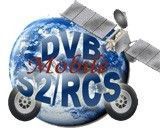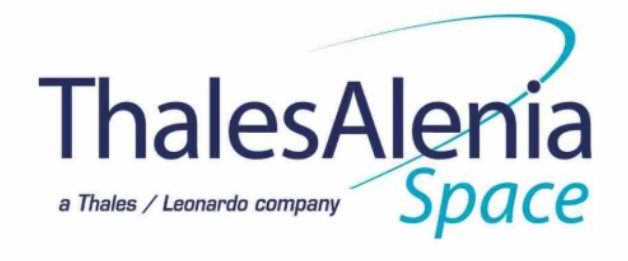
-
StatusCompleted
-
Status date2013-12-19
-
Activity Code3A.014
Objectives
The project activity consists of developing a laboratory test-bed capable of emulating in real time a complete satcom system. The system implements the DVB-RCS mobile specifications, applicable to both LOS and NLOS conditions and for both aggregate and not-aggregate type of traffic. The targeted scenarios are the aeronautical, maritime and land-based (railway and vehicular) ones.
The test-bed will include a base-band terminal HW-emulator supporting mechanisms and functionalities from physical to MAC and Network layers, as described within the DVB-RCS mobile specifications. In particular, the terminal will be general enough to validate all the DVB-RCS mobility features in all the target scenarios.
A realistic hardware channel emulator for both the forward and return links will be developed and integrated within the test-bed. The channel emulator will be used within this project to consolidate DVB-RCS mobile technology and to verify the system performances in the relevant scenarios.
Scope of the project is also to provide stand-alone modules (same design of the test-bed) to upgrade the CTB used for SatLabs Terminals Certification.
Moreover, relevant system performances, outcome of this project, will be used within the DVB-RCS Mobile standardization activity as valuable input to complement the implementation guidelines work.
Challenges
This project is intended to perform:
- assessment of DVB-S2 system architecture and layers for mobile application;
- assessment of DVB-RCS system architecture and layers for mobile application;
- development of critical items with a clear commercial finalization;
- development of a Test Bed to have a realistic test environment;
- campaign of system-level validation tests.
Benefits
SE looks with great interest to DVB-S2/RCS evolution, which represents a very important occasion for the development of commercial products.
There are two distinct DVB-S2/RCS markets SE plans to tackle, i.e. that of User Terminal - UTs and that of Hub.
SE intends to pursue those markets primarily in the Satellite context. In fact this project represents a fundamental step with regard to the development of the innovative Satellite UT and ground station equipment.
Features
The Test-Bed basically comprises:
- DVB-S2 based Forward-Link transmission chain;
- DVB-RCS+M Return-Link transmission chain;
- DVB-Continuous Carrier (CC) Return-Link transmission chain;
- Satellite channel emulator;
- NCC emulator;
- Auxiliary equipment for Test Bed control and monitoring.
The DVB-S2 based Forward-Link includes the following functions:
- Baud Rate in the range [10,45]
- Programmable Baud Rate in the range [10,45] Mcps with 0.5 Mcps steps
- Programmable Roll-Off (0.2, 0.25, 0.35)
- Modulation and coding rates:
QPSK 1/4, 1/3, 2/5, 1/2, 3/5, 2/3, 3/4, 4/5, 5/6, 8/9, 9/10
8PSK 3/5, 2/3, 3/4, 5/6, 8/9, 9/10
16APSK 2/3, 3/4, 4/5, 5/6, 8/9, 9/10
32APSK 3/4, 4/5, 5/6, 8/9, 9/10
- Normal and Short FECFRAME with support of pilots
- DS-Spreading (SF = 1, 2 & 4)
- Support to NCR master clock distribution
- Static Pre-Distorsion on GW Modulator
- Support to ACM
- Encapsulation / de-capsulation of IP packets over MPE/MPEG and GSE ;
- Buffer priority management for supporting IP DiffServ Quality of Service (QoS);
- LL-FEC;
The DVB-RCS Return-Link includes the following functions:
- MF-TDMA with a single carrier
- Encapsulation / de-capsulation of IP packets over ATM with 1 & 4 ATM
- Symbol Rate: 128k, 512k & 2MB
- Turbo
- Modulation:
BPSK 1/2 , QPSK rates 1/2, 2/3, 3/4, 6/7 (no spreading)
BPSK 1/2, QPSK 1/2 (with spreading).
- Spreading:
SF=1, 4 and 16 supported @ 128 kBaud (before spreading)
SF=1 and 4 supported @ 512 kBaud (before spreading)
SF=1 and 4 @ 2 MBaud (before spreading)
- Pro-Active Retransmission
- Buffer priority management for supporting different Quality of Service (QoS);
The DVB-S2 CC Return-Link includes the following function:
- Symbol Rate: 1 x SF MBaud were SF = 1, 4 & 16
- Programmable Roll-Off (0.2, 0.25, 0.35)
- Modulation (Non Spreading):
All the modes used in the Forward-Link plus 4K with the following coding rates: 1/4, 1/2 & 3/4 (BPSK and QPSK only)
- Modulation (Spreading):
QPSK: all modes used in the Forward-Link (Normal and Short FECFRAMEs) with maximum SF=4
QPSK and BPSK with 4K FECFRAME (rates 1/2 and 1/4) with maximum SF=16.
- Pilot on supported
- Pro-Active Retransmission
- Encapsulation / de-capsulation of IP packets over MPE/MPEG and GSE;
- Buffer priority management for supporting different Quality of Service (QoS)
The channel emulator implements emulation of carrier Doppler shift interference (adjacent channel and co-channel), time-variant fading, terminal path emulation and ancillary impairments (attenuation, thermal noise…) over a bandwidth of 40 MHz. The channel emulator input and output interfaces are at 70 MHz IF.
Plan
The project is divided in two phases.
- The first phase aims to reassess the requirements and to consolidate the system specifications, with the support of analyses and simulations.
- The second phase includes a Management Task and five Technical Tasks concerns the equipment development:
- The first task cares for the architectural design;
- The second one for the detailed design;
- The third one for the definition of the test and validation Plan
- The Fourth one with hardware integration and conformance testing;
- Last technical Task is dedicated to the system-level validation and the interoperability tests.
The tasks are subdivided into a total of 46 Work Packages.
The WP responsibility is demanded to 11 highly qualified Key Persons
The project duration is 18 months and is organized as follows:
- an initial six-month period (Phase 1) in which the theoretical and computer simulation activities are carried out, with the aim to identify the best algorithms and implementation solutions, and hence consolidate the specifications;
- a eight-month period covering the design, implementation, integration, and functional verification of the specified equipment;
- a two-month period covering the system integration;
- a final two-month period for the system validation tests.
Current status
COMPLETED





